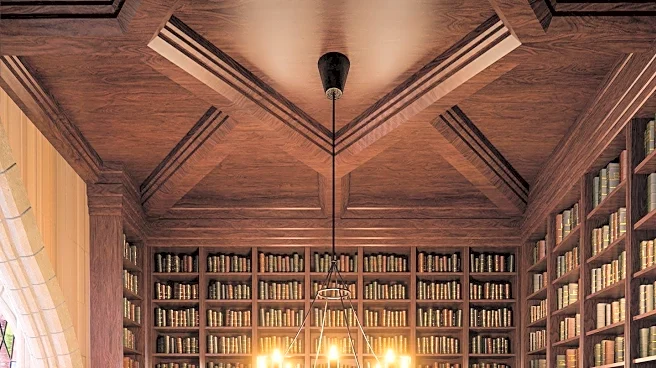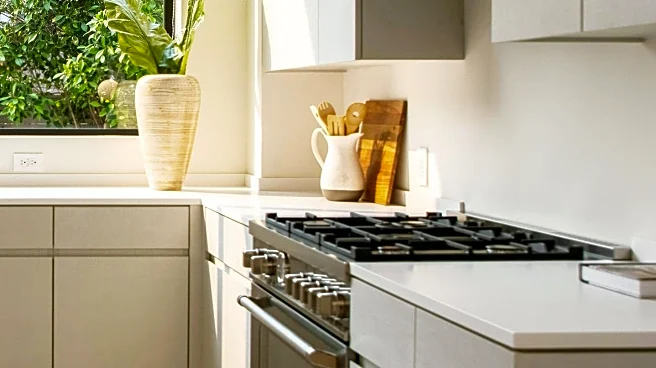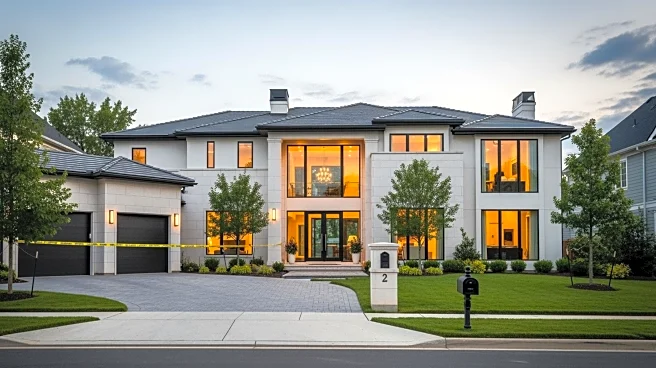What's Happening?
A distinctive property in Columbus, Ohio, known as the 'Book House,' has been listed for sale. This newly constructed home, designed by local builder Guy Marshall, features over 7,000 books displayed on floor-to-ceiling
shelves. Despite its modern construction, the house is designed to resemble a historic mansion, incorporating vintage installations and old-world craftsmanship. The property spans nearly 5,000 square feet and includes unique design elements such as hand-built Murphy beds and card catalogs. The home is currently used as a short-term rental, accommodating up to 24 guests, and is listed for $1.689 million.
Why It's Important?
The sale of the Book House highlights a growing trend in real estate where unique and themed properties are gaining popularity. This trend reflects a shift in consumer preferences towards homes that offer distinctive experiences and aesthetic appeal. The Book House's design, which combines modern construction with a historic feel, appeals to those interested in both luxury and nostalgia. This could influence future real estate developments, encouraging builders to incorporate more thematic and experiential elements into their designs. The property's use as a short-term rental also underscores the increasing demand for unique vacation accommodations.
What's Next?
As the Book House enters the market, it may attract interest from both private buyers and investors looking to capitalize on the short-term rental market. The property's unique design and functionality could set a precedent for future real estate projects, particularly in the luxury and themed housing sectors. Potential buyers might include those interested in hospitality ventures or individuals seeking a distinctive personal residence. The outcome of this sale could influence future real estate trends, particularly in how properties are marketed and valued based on their thematic elements.
Beyond the Headlines
The Book House's design and construction raise interesting questions about the balance between modern building techniques and historical aesthetics. The use of dyed and treated blocks to mimic antique brickwork is a notable innovation, offering both aesthetic appeal and structural resilience. This approach could inspire similar techniques in other architectural projects, blending the old with the new in creative ways. Additionally, the property's success as a short-term rental highlights the potential for themed homes to serve dual purposes, both as private residences and as income-generating assets.











